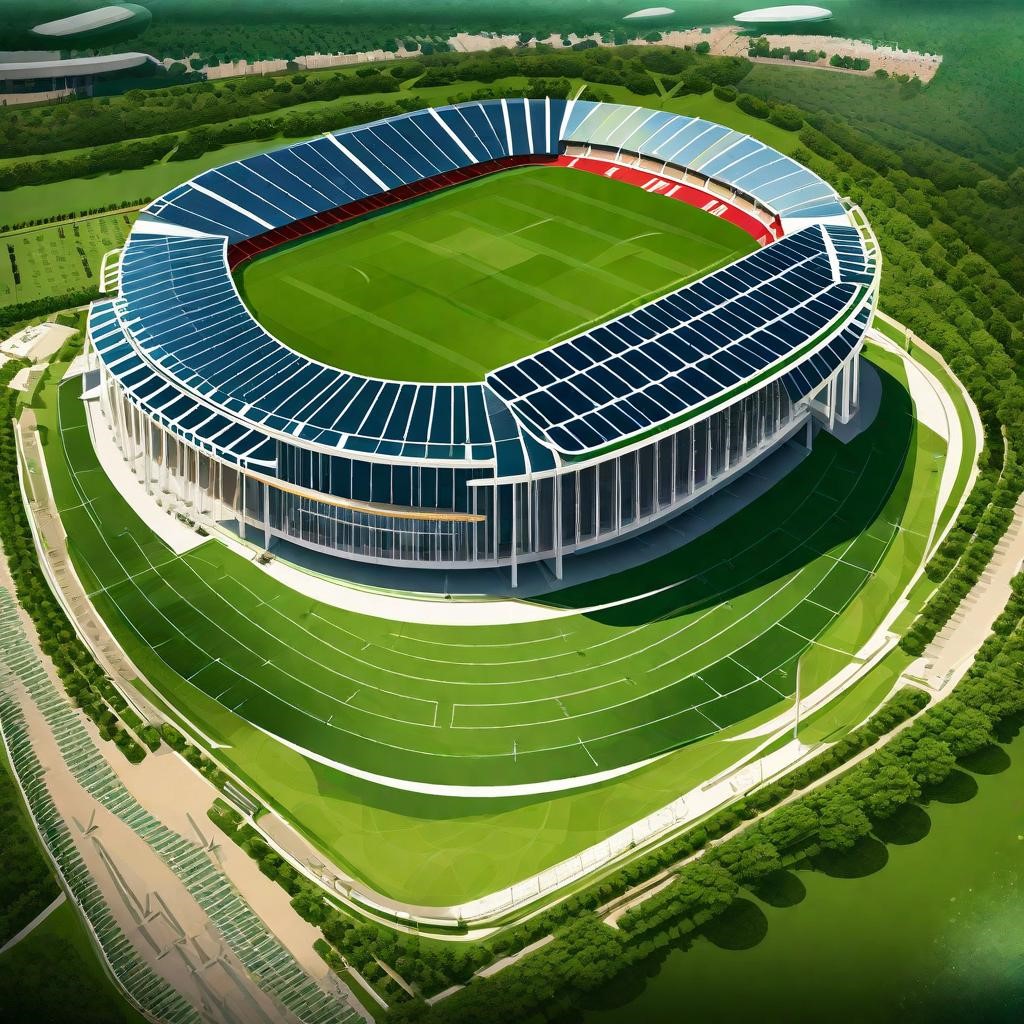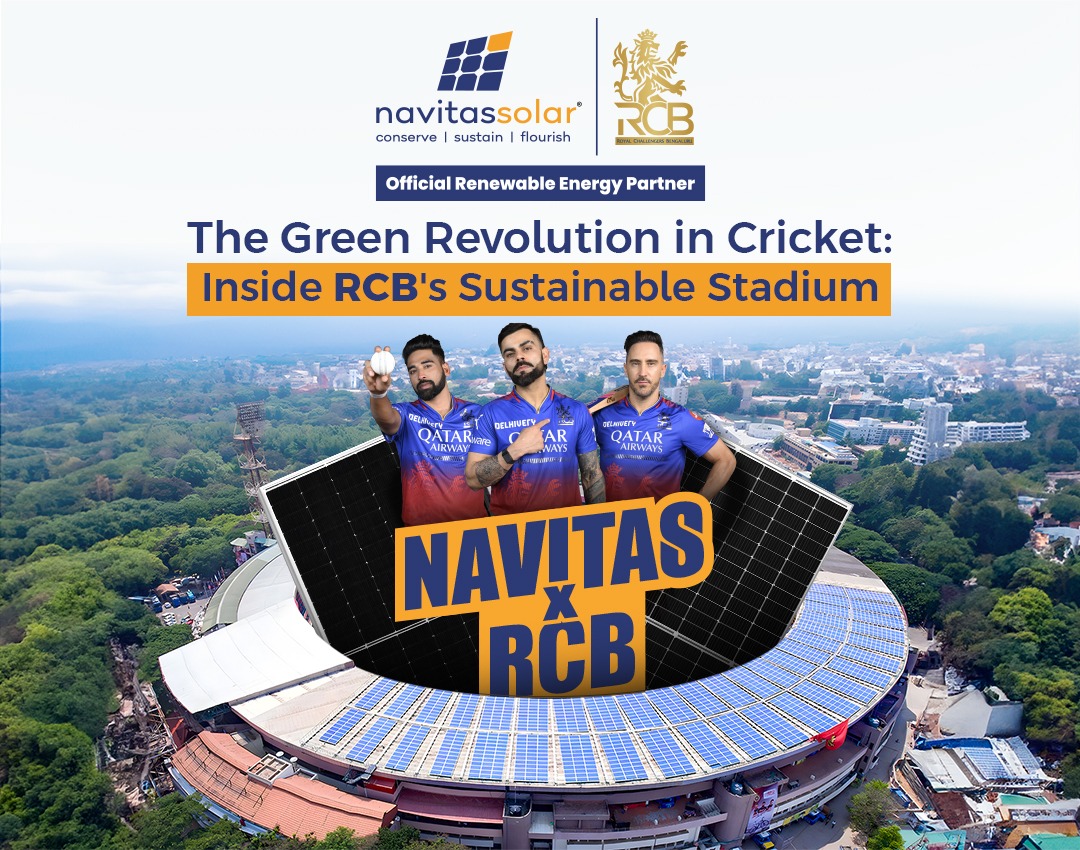The Green Revolution in Cricket: Inside RCB’s Sustainable Stadium

1. Overview of the RCB Stadium’s Eco-Friendly Initiative
The cricket team Royal Challengers Bangalore (RCB) has implemented eco-friendly methods in its stadium, marking a significant advancement towards sustainability. This dedication to green initiatives not only demonstrates RCB’s concern for the environment, but it also establishes a standard for other sports stadiums across the globe. Let’s examine the steps that the Royal Bengal Tigers have taken to ensure that cricket infrastructure is more sustainable in the future.
– An outline of RCB’s sustainability commitment
RCB’s commitment to sustainability extends beyond their on-field success. They have embraced environmentally conscious programs that support renewable energy sources and lessen their carbon footprint. RCB has set an example for other cricket teams aiming to have a positive environmental impact by emphasizing sustainability.
– Solar Energy’s Effect on Cricket Infrastructure
The installation of solar panels at RCB’s stadium to capture solar energy is one of the most noteworthy accomplishments. In addition to offering a clean, renewable energy source, solar energy also lowers electricity bills and lessens reliance on non-renewable resources. This creative action demonstrates RCB’s dedication to environmentally friendly cricket practices.
– Eco-Friendly Practices in Sports Arenas: An Evolution
The eco-friendly stadium built by RCB is a prime illustration of the rapidly developing trends in environmentally conscious sports venues. RCB is at the forefront of a push towards more sustainable sports infrastructure by using green initiatives and technologies. Their green revolution’s success is evidence of how crucial environmental stewardship is in today’s.
2. At RCB Stadium, solar panels will power cricket’s future.
– Solar Panel Installation Procedure and Advantages
The procedure of installing solar panels at RCB’s stadium required careful planning and skillful implementation. The stadium’s carbon impact is drastically decreased by these solar panels in addition to producing clean energy. RCB has shown its dedication to long-term sustainability in cricket infrastructure by making an investment in solar electricity.
– How Stadium Operations Make Use of Solar Energy
RCB’s stadium uses solar energy that is collected from the panels for a number of stadium operations. Sunlight energy is vital to the stadium’s operation, as it powers vital machinery and floodlights during games. This helps the stadium run smoothly and sustainably. This incorporation of renewable energy sources demonstrates RCB’s forward mindset.
– Diminution of Energy Expenses and Carbon Imprint
RCB has achieved a significant reduction in their carbon footprint by utilizing solar energy. Long-term energy expenditures are reduced for the team as well as for the environment by this decrease in greenhouse gas emissions. Leveraging solar electricity has both financial and environmental benefits, thus RCB and the environment gain from it as well.
3. Environmental Factors in the Sustainable Stadium Design of RCB
– Using Green Building Design Principles
Green building ideas that put an emphasis on environmental preservation and energy efficiency are incorporated into the design of the RCB sustainable stadium. Every element of the stadium’s design, from sustainable building techniques to eco-friendly materials, is meticulously thought out to reduce its environmental impact. RCB’s commitment to sustainability is demonstrated by its involvement in green building.
– Water-Sparing Measures in Place
Water conservation is a key component of RCB’s stadium design in addition to energy efficiency. Water-efficient fixtures, irrigation techniques, and rainwater collecting systems are used to lower water usage and advance sustainable water management. These programs help the environment and make stadium operations more environmentally friendly.
– Techniques for Waste Management for a Greener Environment
trash management techniques intended to lower trash creation and encourage recycling and reuse are also a part of RCB’s sustainable stadium design. RCB reduces the environmental effect of stadium operations and provides an example for responsible waste disposal in cricket infrastructure by putting into practice efficient waste management procedures. RCB’s dedication to promoting environmental sustainability is emphasized by its all-encompassing approach to sustainability.
4. Public Education and Community Involvement with Solar Energy
– The RCB’s Initiatives to Promote Sustainable Behavior
RCB regularly participates in community outreach to promote sustainable practices and the advantages of solar energy. RCB informs supporters and stakeholders about the value of environmental preservation and motivates them to take part in eco-friendly projects through a variety of outreach programs and activities. RCB hopes to encourage constructive community transformation by promoting a sustainable culture.
– Educational Initiatives Combined with Stadium Tours
Tours of RCB’s sustainable stadium involve educational activities that showcase the venue’s cutting-edge environmentally friendly features. The waste management systems, green building components, and solar panels are explained to visitors, giving them important knowledge about environmentally friendly methods used in cricket infrastructure. These instructive.
– Eco-Friendly Initiatives’ Effect on Fan Interaction
The environmentally conscious actions of RCB have significantly increased fan engagement and fostered a sense of pride and community among followers. As a result of the team’s dedication to sustainability, supporters are more inclined to get involved in green projects. RCB has improved the environment and forged stronger ties with the community by enlisting supporters in the transition to a greener future.
5. Prospects and Difficulties for Solar Energy Integration in Cricket in the Future
– Possibility of Solar Energy Extension in Additional Cricket Stadiums
The RCB stadium’s successful incorporation of solar energy opens the door for other cricket venues to do the same. RCB establishes an industry standard for sustainability in the sports sector by demonstrating the benefits of renewable energy sources. The possibility of expanding solar energy use in other cricket stadiums is indicative of a growing movement toward eco-friendly projects that boost both profitability and the environment.
– Overcoming Regulatory and Financial Obstacles in Sustainable Development
Overcoming financial and legal obstacles is one of the difficulties in putting eco-friendly ideas into sporting stadiums. The long-term savings and environmental advantages of solar panels and green technology far outweigh the initial investment, even though it may be substantial. By negotiating legal.
– Sustained Innovation and Green Technology Adoption
It will be crucial to keep innovating and implementing green solutions as the need for sustainable practices in cricket infrastructure develops. The potential of environmentally conscious sporting activities is demonstrated by RCB’s sustainable stadium, which opens the door for more developments in green technologies. Cricket teams can spearhead the transition to a more ecologically conscious future by remaining at the forefront of sustainability.
summary
The transition of cricket stadiums to solar power, as demonstrated by RCB’s sustainable effort, is a major step in the direction of a more environmentally friendly sports industry. Cricket teams are leading the way in environmental stewardship and sustainability by utilizing solar power and incorporating sustainable practices. As the shift to renewable energy sources picks up steam.
FAQs:
* What are the advantages of solar energy for cricket stadiums such as RCB’s?
* What obstacles must eco-friendly efforts in sports venues overcome to be implemented?
* In what ways may cricket stadium patrons support sustainability initiatives?


Related Posts
You May Also Like
A Step-by-Step Guide to Solar…
Read MoreEmpowering the Leaders of Tomorrow:…
Read MoreThe Future of Energy is…
Read MoreNavitas Solar Powers Up for…
Read MoreRCB Goes Green: How Navitas…
Read MoreBats, Balls, and Solar Panels:…
Read More